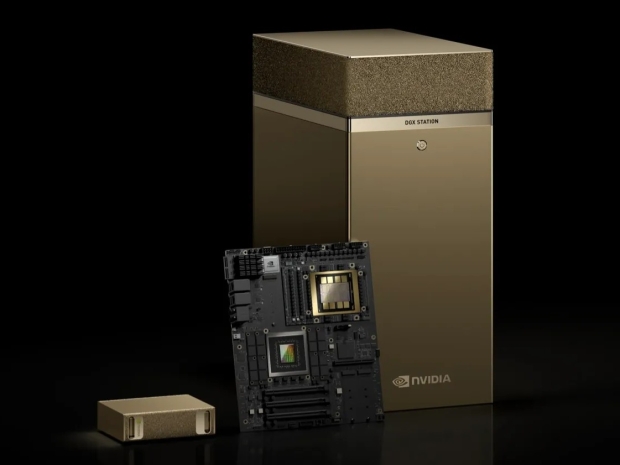The first is the DGX Spark, formerly known as Project Digits, a compact AI supercomputer that runs on the new GB10 Grace Blackwell Superchip. This machine is small enough to sit under your desk and is designed for supervillains who require compact form factors in their bid for global domination.
Then there’s the DGX Station, which resembles a tower PC but claims to outperform high-end workstations. It's equipped with Nvidia’s GB300 Grace Blackwell Ultra Desktop Superchip, 784GB of unified memory, and a ConnectX-8 SuperNIC, which significantly enhances hyperscale AI workloads.
The Grey Box Shifter Dell and the maker of expensive printer ink HP have launched knockoffs — sorry, “rivals” — of Nvidia’s AI behemoths. Dell’s effort is the “Pro Max with GB300,” a workstation equipped with 288GB of HBM3e GPU memory, 496GB of LPDDR5X for the CPU, and sufficient power to train LLMs with more parameters than a GDPR policy allows.
HP has called its offering the ZGX Fury AI Station G1n, which is probably an indication of HP being allergic to readable branding. The “n” at the end of the name signifies that an Nvidia processor powers it - in this case, the GB300.This machine plugs into HP’s existing AI ecosystem.
HP says the ZGX Fury AI Station G1n “provides everything needed for AI teams to build, optimise, and scale models while maintaining security and flexibility,” noting that it will integrate into HP’s broader AI Station ecosystem alongside the previously announced ZGX Nano AI Station G1n (its DGX Spark alternative).
Prices are still under wraps, but considering the DGX Spark starts at $3,999, you can expect the DGX Station and its corporate cousins to be priced somewhere between “eye-watering” and “just sell your children for medical experiments.”




